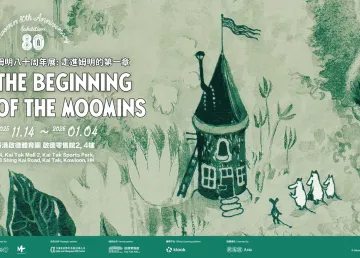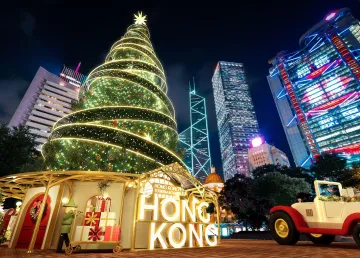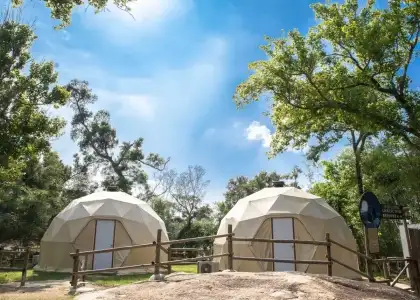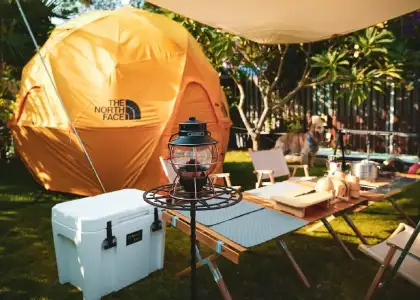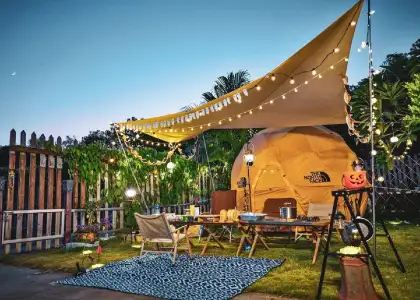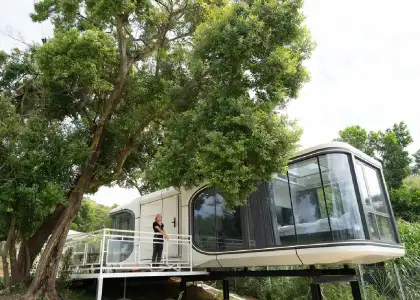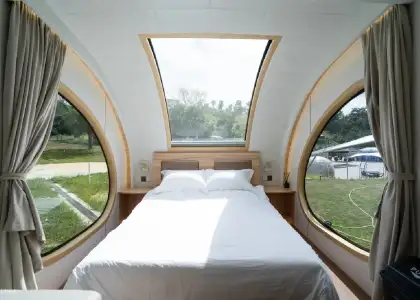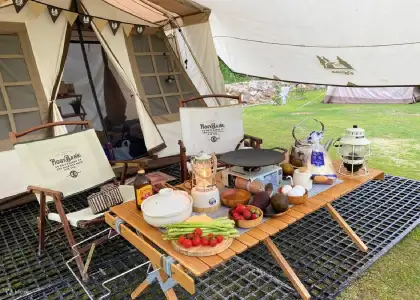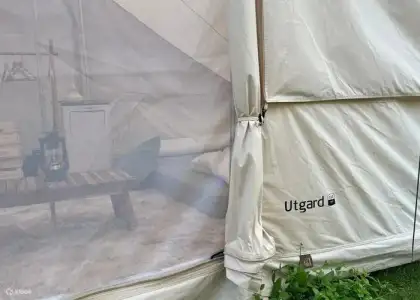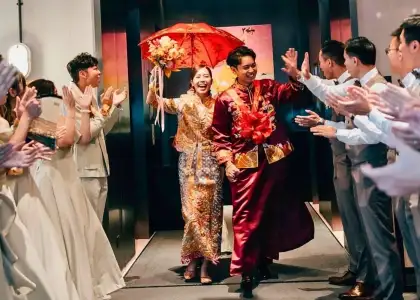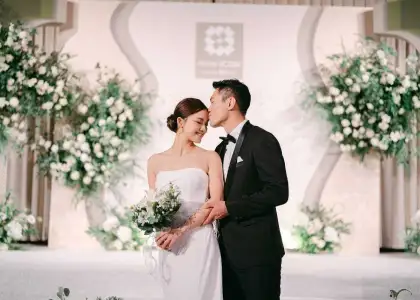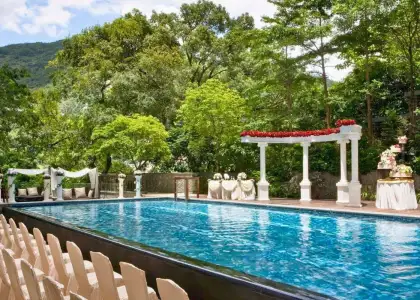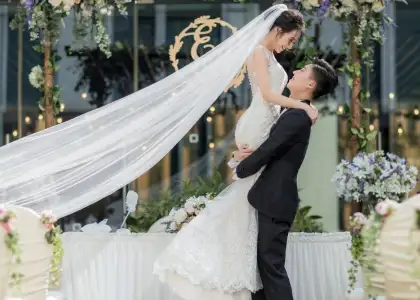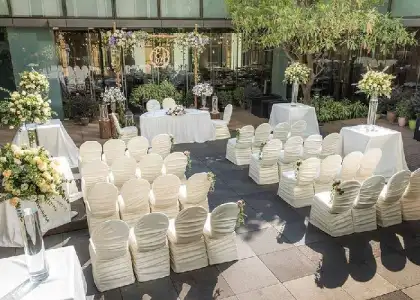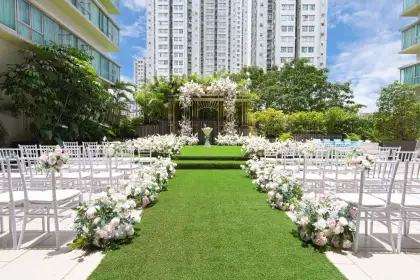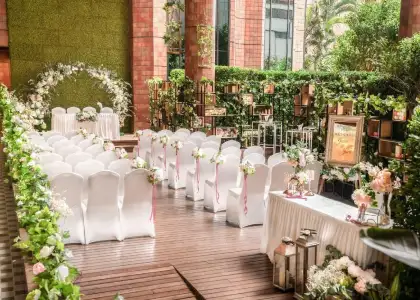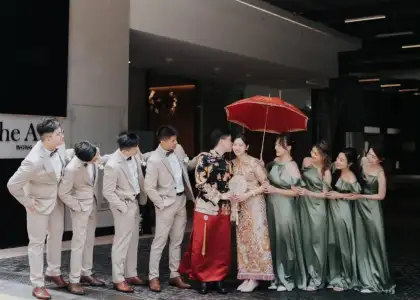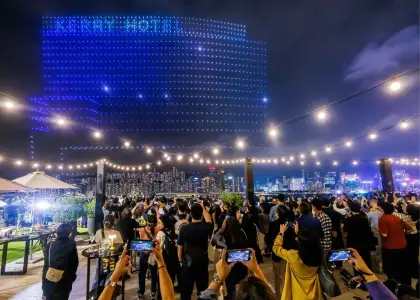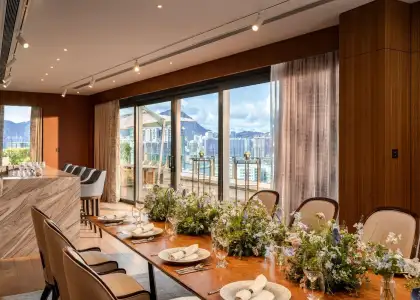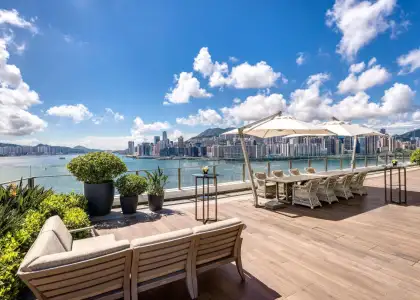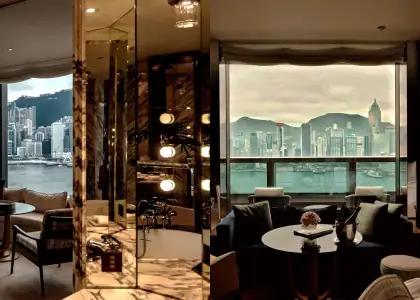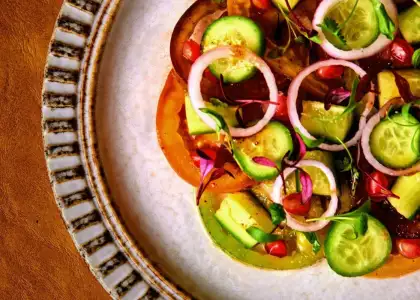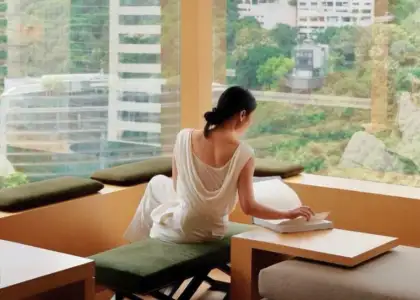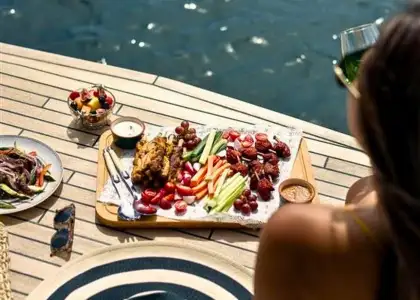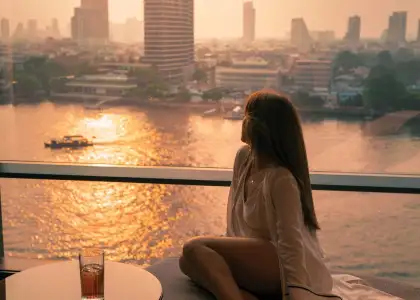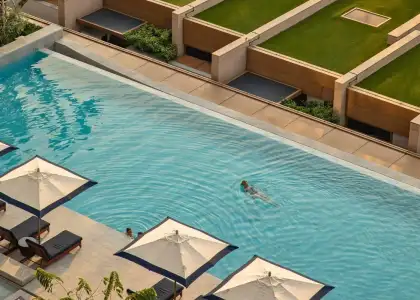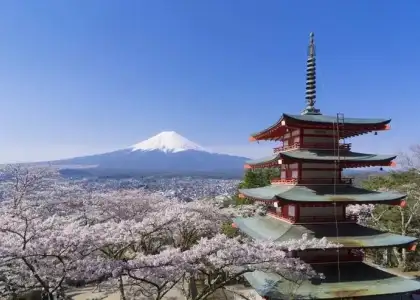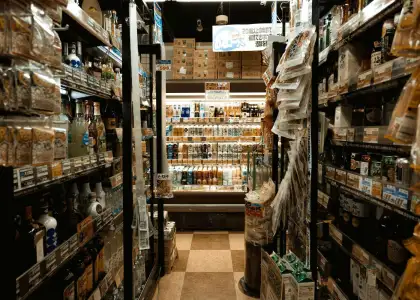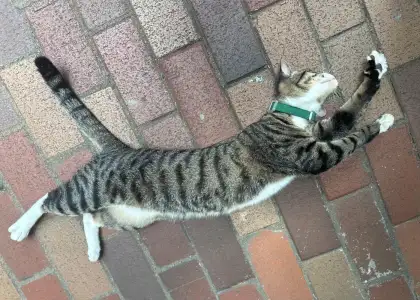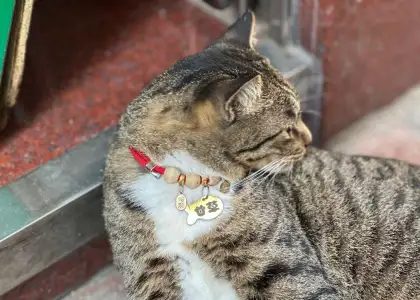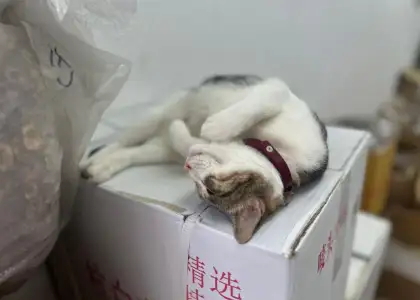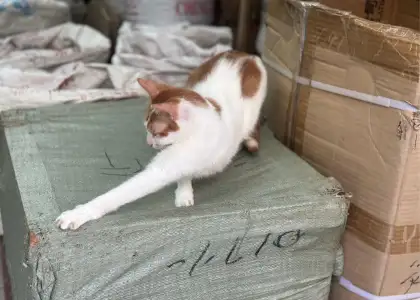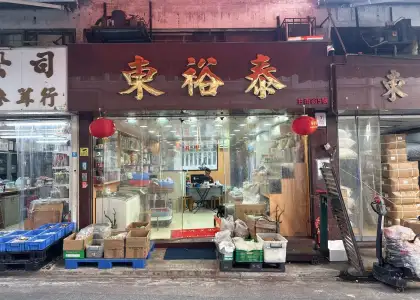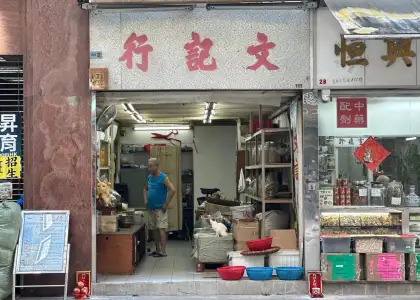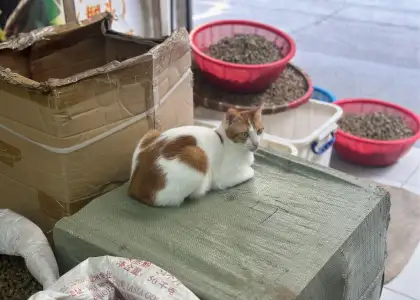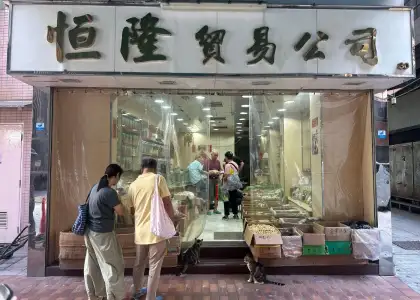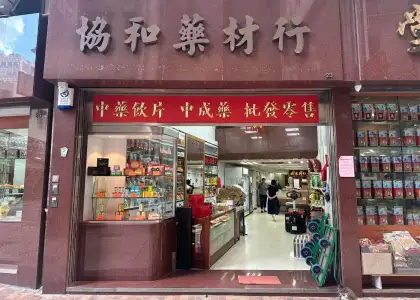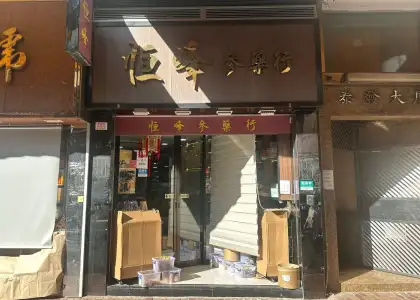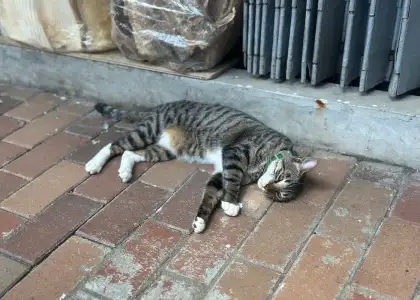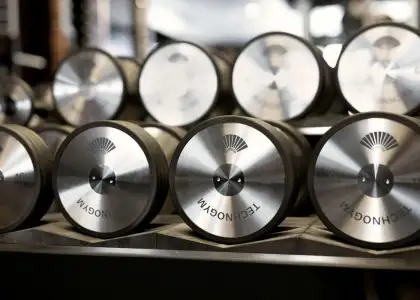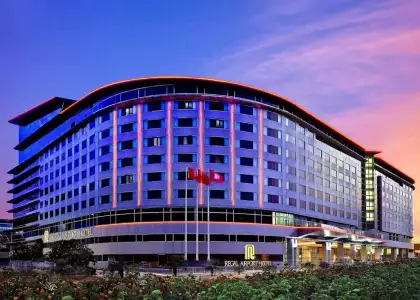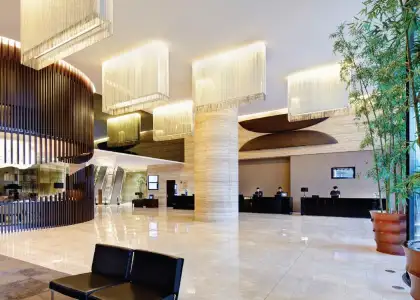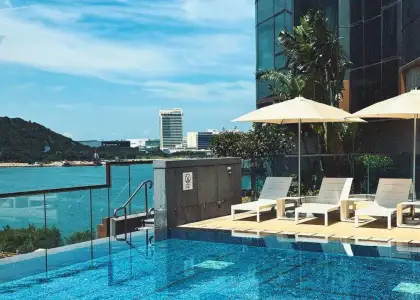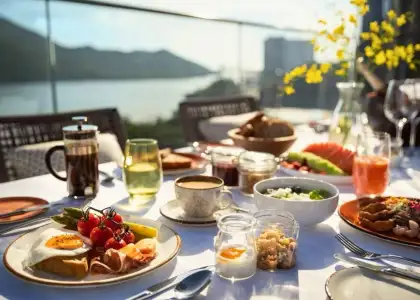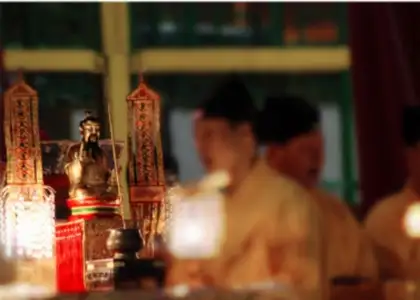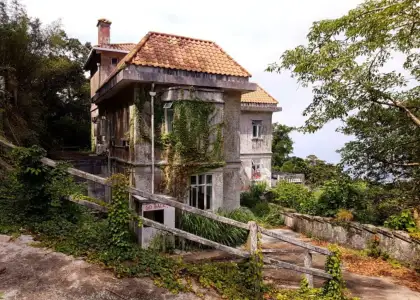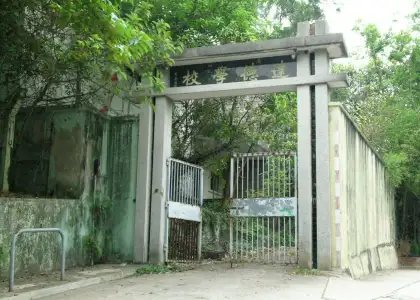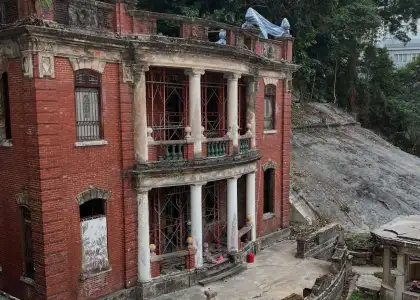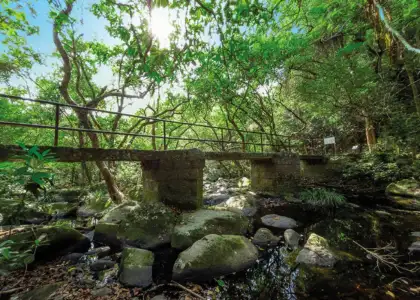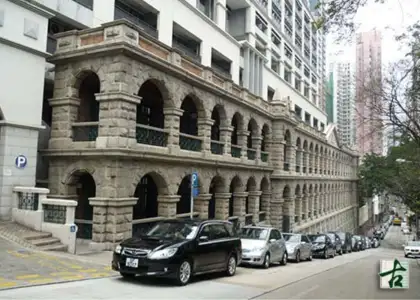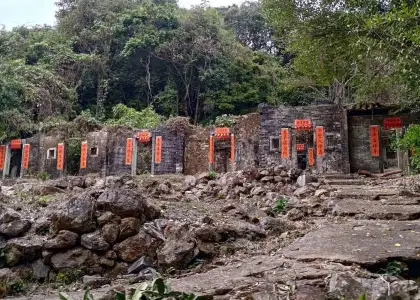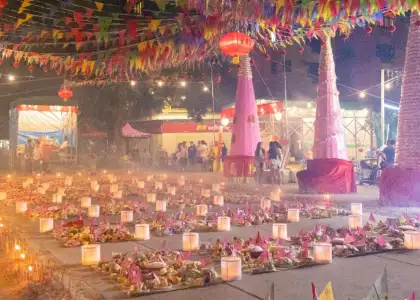The Oldest Western Building in Hong Kong that Exhibits Tea
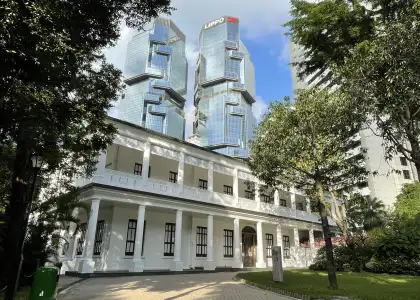
Sitting atop on Hong Kong Park in Admiralty is the Flagstaff House, an elegant and simple two-floored beige structure that houses China’s oldest teapots and tea-making equipment in Hong Kong’s oldest surviving Western building.
With the structure completed in 1846, the Flagstaff House, now operating as the Museum of Tea Ware, served as an office and residence for the commander of British forces in the city
Built three years after control of the colonial colony, Flagstaff has stood as a residence for colonial British army staff and senior members, a site of occupation for Japanese admirals, and currently a government-run public museum for the exhibition of tea, tea-pots, tea history, and tea-making equipment.

A MilitaryPresence on the Island
Hong Kong Park, located in the heart of Admiralty, the city’s business and political centre, is home to a litter of historic colonial structure of the Victoria Barracks, one of the first British military compounds in Hong Kong.
Included is the Flagstaff House, former residence of the Commander of British Forces, and believed to have been designed by the Corps of Royal Engineers, commonly known as the “Sappers.”
In 1841, Jardine, Matheson & Co – currently the Jardine Group – built a sizable residential house at the site, designated for military purposes, such as planning defensive strategy and establishing police presence in the former crown colony.
Due to a shortage of space for the once military residence, the British quarters were torn down and replaced in 1846 as a “Headquarters House,”, constructed for the residence for the Lieutenant Governor of Hong Kong, the second-most senior position during colonial rule from 1843 to 1902, Major General George Charles D’Aguilar.
General D’Aguilar, of Jewish-Austrian ancestry, arrived in Hong Kong aboard the HMS Castor on Dec. 27, 1843, appointed to Lieutenant Governor on Jan. 11, 1844. He served under Sir Henry Pottinger from 1843 to 1844 and Sir John Francis David from 1843 to 1848, Hong Kong’s first two governors, before returning to Britain in 1848.

British Construction and Greek Thought
The original structure of the Flagstaff House stood high, perched on a green patch of land overlooking the newly constructed on Queen’s Road in 1846.
The Royal Engineers, based in Hong Kong, spent about three years constructing Flagstaff House. Buildings works to house government officials and senior military officials were reportedly sped by a typhoon nearing Hong Kong on Jul. 21, 1841.
In his book, “Hong Kong: the Cultured Pearl,” Nigel Cameron wrote: "At that time it crowned a small bluff above the new Queen's Road, itself skirting the shoreline. Today the house is all but 300 yards from the harbour, land having been extensively reclaimed."
The historical fact of Flagstaff remaining Hong Kong’s oldest domestic Western-styled building is true; however, there lays disagreement over who originally designed the building.
Various Hong Kong-based historians credit British -watercolor artist and Scottish building inspector, Murdoch Bruce, who operated in colonial Hong Kong writing building regulations and examining British-built structures in the territory.
Others, however, claim that Lieutenant Bernard Collinson of the Sappers, who in 1845 produced the city’s first map, conducted most of the work in designing Flagstaff House.
Flagstaff House today, after several interior renovations and architectural works, remains unchanged from the original 1846-constructed structure.

The House was designed in the Greek Revival style, an architectural thought inspired by the simple symmetry, proportion, and elegance of ancient Greek temples of the 5th century B.C. The style is said to have arrived in Hong Kong through the import of famed British architect James “Athenian” Stuart into 18th century Britain.
On a 1758 trip to Greece, Stuart catalogued his discoveries of the classic architecture of Greece and published his findings in “Antiquities of Athens” in 1762, producing the world’s first reference book for detailing the style, form, and shape of classical Greek architecture.
Upon the ceding of Hong Kong from Chinese authorities to the British colony in 1841, emigrating Hong Kong officials, architects, and constructors began designing offices and official residences in the rich style of an admired Mediterranean country.
Dotted around Hong Kong, including the Hong Kong 1881 Heritage Centre, Old Wan Chai Post Office, Formal Central Magistracy, and the Dr. Sun Yat-sen Museum, are examples of a Greek revival-styled British-built public buildings in the early 1900s.
Comparisons with the cost of the original Government House on Victoria Peak, completed in early 1854 at a cost of HK$188,710, offers a fair guide to the estimated cost of the 1846 structure.

The Plight of Japanese Occupation
Flagstaff House stood as a residence for the Lieutenant Governor as Commander of the colonial British Forces based in the city from 1844 to 1902.
Known as the Headquarter House until 1932, Flagstaff continued to house the military leaders of Hong Kong’s British Forces prior to Japanese occupation of the territory.
The west and east wings of Flagstaff House were shelled during the Japanese invasion iIn World War II in 1941; it also suffered extensive bomb damage that rendered the building unusable.
Japanese forces repaired it during the “three years and eight months” occupation of the city and the Commandant, led by Governor General in 1941, Takashi Sakai, took the building as his residence during the occupation.
The House served as the residence of Japanese Vice Admiral Nimi, Hara, Soejima, and Fujita from 1941 to 1945.

A New Purpose for Tourism and Tea
Following the Japanese Occupation and surrender of foreign Asian forces to the British, Flagstaff House was again repurposed as the Commander’s residence until 1978 and an adjustment to the position of the Lieutenant Governor, following legislation changes in a now-peaceful Hong Kong.
Lieutenant-General Sir John Archer occupied Flagstaff House from 1976 to 1978, before his tenure finished, returning to Britain to serve as Commander in Chief for the U.K. Land Forces for two more years, until his retirement in 1980.
His successor, Sir Roy Redgrave assumed under a new title, Major-General, a new residence, Headquarters House on Barker Road, with Flagstaff House in the hands of the civilian Hong Kong government, as part of a recovery plan of the British-built military Victoria Barracks.
The final man to occupy Flagstaff House as an official residence, albeit short, was Sir Denys Roberts, then-Chief Justice of Hong Kong, presiding over the city’s British-declared judicial system.

In 1981, the building was placed under the reign of the Urban Council, a government body responsible for municipal services on Hong Kong Island and in Kowloon.
Restoration efforts were made in 1989 after the building was declared a monument by the Antiquities and Monuments Office; the original mid-19th century façade was restored, structural reinforcements were put in place, and the interior was stripped and modified to repurpose for a museum.
Five years prior, discussions in government began to convert the Flagstaff House into a branch museum of the Hong Kong Museum of Art, the Museum of Tea Ware.

900-Year-OldTeapots
The Museum of Tea Ware at Flagstaff House holds permanent and revolving exhibitions, demonstrations of teamaking, tea gatherings and artist competitions, and guest lectures aimed at promoting Chinese tea-drinking culture.
The museum’s permanent exhibitions hold and display Hong Kong and Chinese tea ware and equipment for tea making, including samples and collections from the Qing Dynasty and of the Yixing teapot.
The ground-floor gallery holds a permanent exhibition, “Let’s Talk about Tea through the Ages,” featuring various historical tea vessels used in China and Hong Kong and introducing various methods of tea preparation through the history of the Sino world.

Visitors can learn about the ancient Chinese preparation of “whipped tea,” the frothing of green tea powder to create a bubbly caffeinated drink, the historical relationship between ethnic Chinese groups and tea-drinking, and the select health benefits for different tea leaves found in China.
The first-floor gallery holds the permanent exhibition “Chinese Ceramics and Seals Donated by the K.S. Lo Foundation,” holding the personal donations from Dr Ka Shui Lo of ceramics dating to the Song and Ming dynasty.
The core exhibition holds about 600 pieces of tea ware and related tea vessels dating from Western Zhou – 11th BCE to 771 BCE – up to the 20th century. In 1994, the K.S. Lo Foundation donated 25 items of rare Chinese ceramics and over 600 pieces of Chinese seals to the museum, with the K.S. Lo Gallery, a new wing adjacent to the house, opening in December 1995 to present the items.

Weddings and Engagements
Tucked away behind the prized scenery of Hong Kong Park’s nature lake and waterfall, the Flagstaff House endures a contemporary legacy of acting as a picture-perfect backdrop for engagement and wedding photos.
The House is a prominent stop on day journeys of sweating photographers and black and white-dressed engaged couples, touring around the Park and Central’s picturesque landscapes for the perfect shot.
Subscribe to The Beat's newsletter to receive compelling, curated content straight to your inbox! You can also create an account with us for free to start bookmarking articles for later reading.


